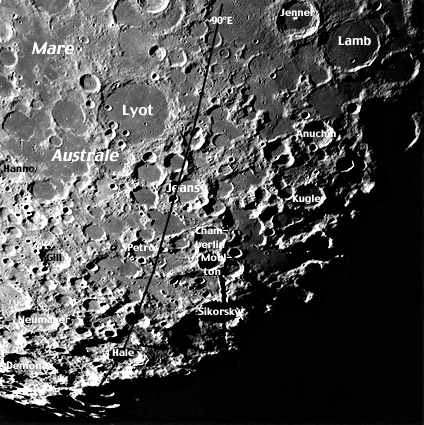May 18, 2004
Southern Sea
Image Credit: Apollo AS15-96-13093 |
|
Southern Sea Many of the great orbital images from the Apollo program have been high resolution Metric and Panoramic camera shots, but the handheld Hasselblads photos have also provided many superb views, in large part because the astronauts looked out the window and snapped away whenever there was an interesting scene. This great photo from the Apollo 15 crew shows part of a very strange mare and impact basin - Mare Australe. As the mouseover image shows, Australe straddles the Moon's southeast limb and requires a good libration to see well from Earth. Australe is an 880 km wide circle defined by mare lava flooding of most of the craters inside the circle and essentially no flooding on those outside. Clementine altimetry measurements show that the center is about 2.1 km lower than the edges - it really is a depression. And there is a moderate mascon or mass excess, probably due to an upwarp of high density mantle rocks into the lunar crust. Australe is a basin - it just doesn't look like it! Australe is an ancient basin - presumably its original multi-ring structure was destroyed by later impacts and/or buried by rising magmas. Possibly also, the lunar crust was not as stiff as later and it may have relaxed isostatically, reducing topographic extremes. The problem with that idea is that there is still a 2 km depression, and nearly is an even older and deeper basin - South Pole-Aitken basin. In fact, these two ancient adjacent basins are more alike than any others on the Moon. Hmm. Related Links: Yesterday's LPOD: Clementine Atlas Tomorrow's LPOD: A New Observing Guide |
Author & Editor:
Charles A. Wood
COMMENTS?
Register, Log in, and join in the comments.





